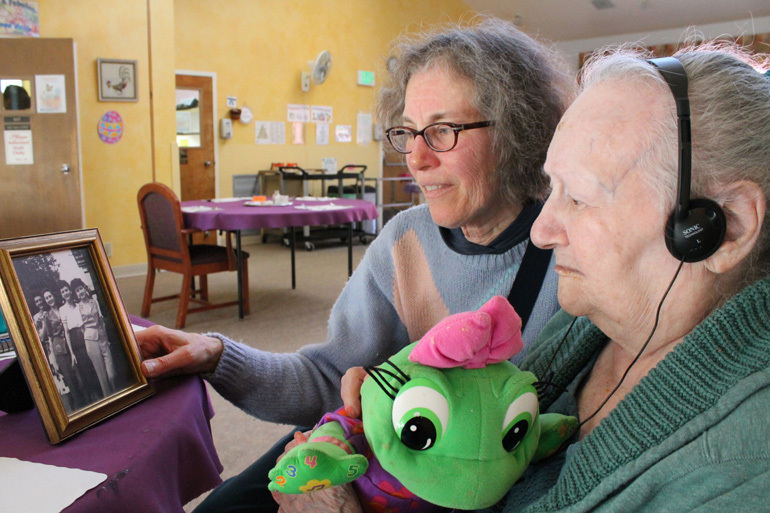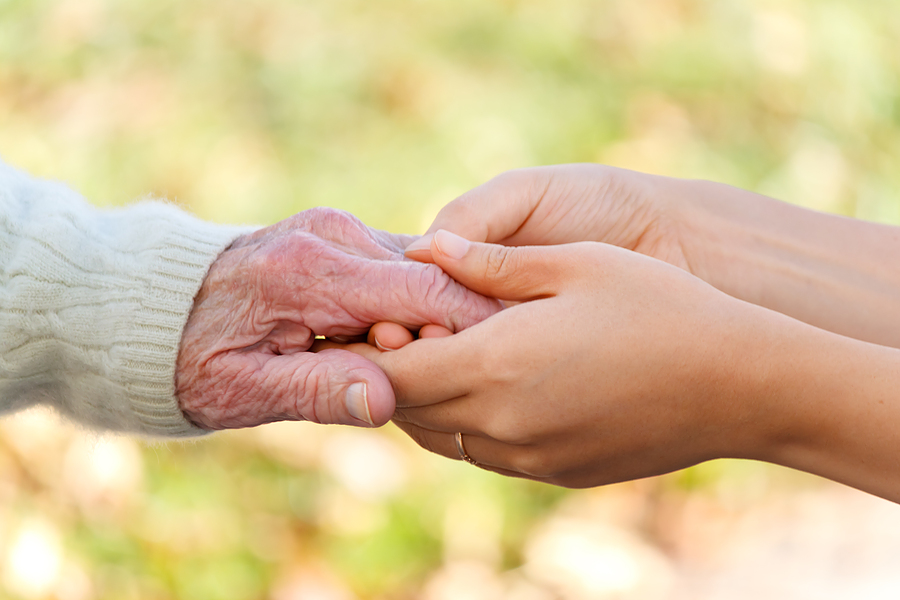Diane Schoenfeld comes every Friday to the Chaparral House nursing home in Berkeley, Calif. to spend time with her aunt, Lillie Manger. “Hi Aunt Lill!” she says, squatting down next to her aunt’s wheelchair, meeting her at eye level. Manger is 97. She has straight white hair pulled back in a neat bun today. It’s tied with a green scarf, a stylish reminder of the dancer she used to be. Diane Schoenfeld, left, shows a family photo to her 97-year-old aunt, Lillie Manger. (Photo by Rachel Dornhelm/KQED) They go together to the dining room to look over family pictures. Manger needs to be reminded who is in them. Including one of herself. “That’s me?” she asks. “That’s you,” her niece confirms. “Am I
Tag: mental health
Narrative Matters: On Our Reading List
Editor’s Note: “Narrative Matters: On Our Reading List” is a monthly roundup where we share some of the most compelling health care narratives driving the news and conversation in recent weeks. The One In 40,000 Parents think their children are one in a million, but Liz Savage knows what it means to have your child be the statistical anomaly. One in 40,000 measles, mumps, and rubella (MMR)-vaccinated patients will be affected with immune thrombocytopenia purpura. Her son, whom she refers to as “Oscar” in her story for Slate, “My Son, the Statistic,” was hospitalized with low platelet counts, as his body adversely reacted to the immunization. Oscar recovered, and despite the stress of the ordeal, Savage says she’d still vaccinate him again. “I had to weigh my
Mental health care access for teens improving, but less for communities with disparities
A national survey shows perceived disparities in access to healthcare in communities with racial, ethnic inequitiesTeens in the U.S.
Can hospice care reduce depression in the bereaved?
It can be a challenge to ensure good quality of life as a person’s life draws to a close. The knowledge that death is imminent—and the awareness that it is unavoidable—understandably brings intense anxiety and fear, for the person who is ill and the people who love him. Hospice care improves quality of life in the dire circumstances of a person’s last days. It can enable the dying to spend this time in peace, surrounded by family and friends, and in little pain. But the role of hospice goes beyond palliative care. For example, such programs can: Provide necessary drugs, medical supplies, and equipment. Teach family members how to care for the person who is ill. Support the dying person as he deals with the emotional and
The Post-Graduate Detox
It’s graduation season and recent grads are finding themselves at the epicenter of the perfect storm of anxiety, nostalgia, debt, hopefulness and new beginnings. Graduation is a time of great joy but it can become a time filled with many unknowns. Handling these new feelings and situations takes a bit of practice and patience. Twenty months ago, I found myself entering into a graduate program without any expectation other than receiving a Master of Communications while bolstering my knowledge and earning potential. But the friendships I left with and the transformations I experienced created a safety net of sorts for me that I’d grown accustom to. The effects of that final surreal week were not felt until the Monday after graduation was over. Had I known
Most Australian soldiers do not have mental resilience to deal with combat: study
Most Australian soldiers do not have the high level of mental resilience needed to deal with combat, a survey of Army troops and supervisors finds.
Research Roundup: Antibiotic Resistance; Physician Turnover; Contraceptive Coverage
SOURCE: Kaiser Health News » Aging – Read entire story here.
Children’s Mental Health Services Get Attention In New York, Minnesota
SOURCE: Kaiser Health News – Read entire story here.
Pets can help their humans create friendships, find social support
Pets can provide their owners with more than companionship. A new study shows they can also help create human-to-human friendships and social support, both of which are good for long-term health. That’s old news to dog walkers, most of whom routinely meet neighbors, other dog walkers, or strangers on their rambles. “I didn’t meet many people when I moved into my new neighborhood,” says Dr. Elizabeth Frates, assistant professor of physical medicine and rehabilitation at Harvard Medical School. “But that changed when we got Reesee, our goldendoodle. She opened the door to a new universe of people.” A new study, published online in the journal PLoS One, shows that other kinds of pets, including cats, rabbits, and snakes,
Mental health research bolstered with new laser microscope technology
It’s hoped Newcastle’s new state-of-the-art laser microscope, the first of its kind in Australia, will lead to improved treatments for people suffering from mental health disorders.
Don’t Just Integrate, Innovate—When It Comes to Mental Health
The sheer number of people living unsupported with some form of psychological or emotional pain suggests that the traditional laws of supply and demand are not working in the mental health arena. As we close on May, as Mental Health Awareness Month, it is important that we raise public awareness of individuals struggling alone with poor mental health and acknowledge the need for a new paradigm that aligns society’s needs with widely available technological and social connectivity. Today, nearly one in every five adults – over 40 million Americans – experience some form of mental illness in any given year. This is a diverse population. There are those with major psychiatric illnesses, such as schizophrenia, who may require professional in-person care, medication or even hospitalization. But there






